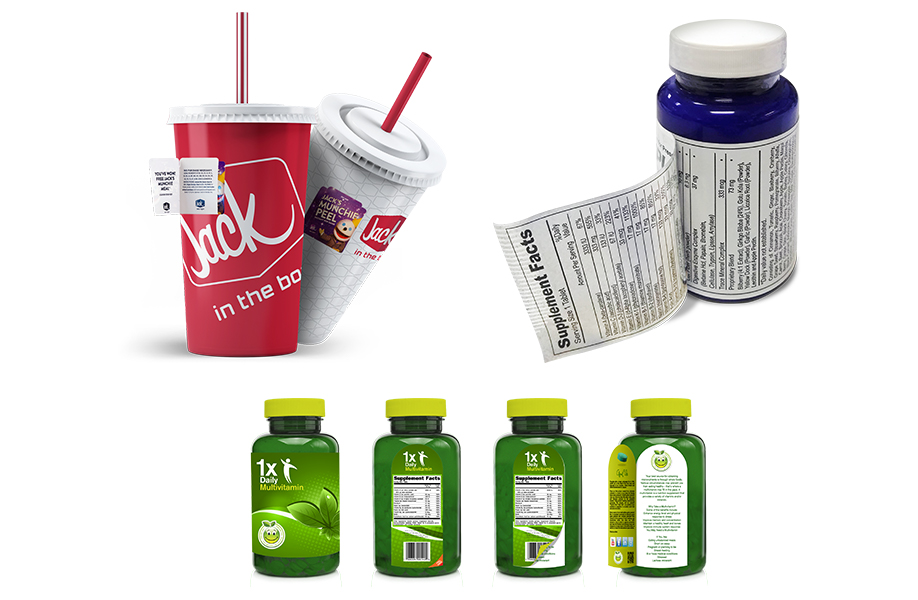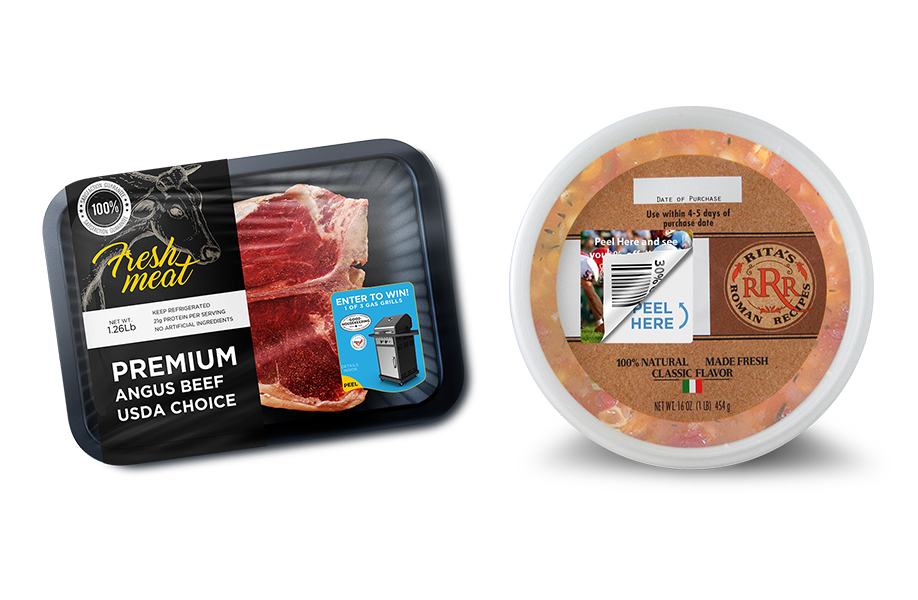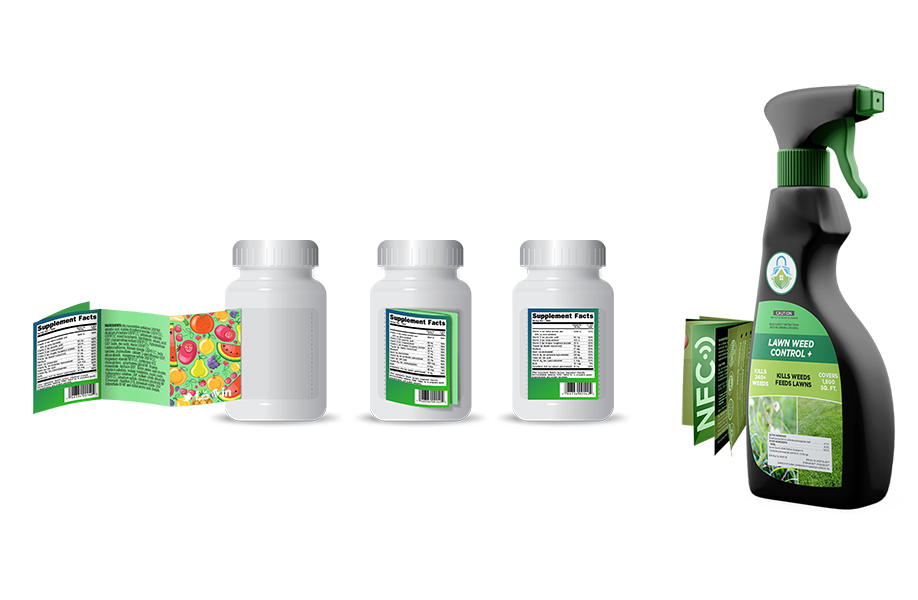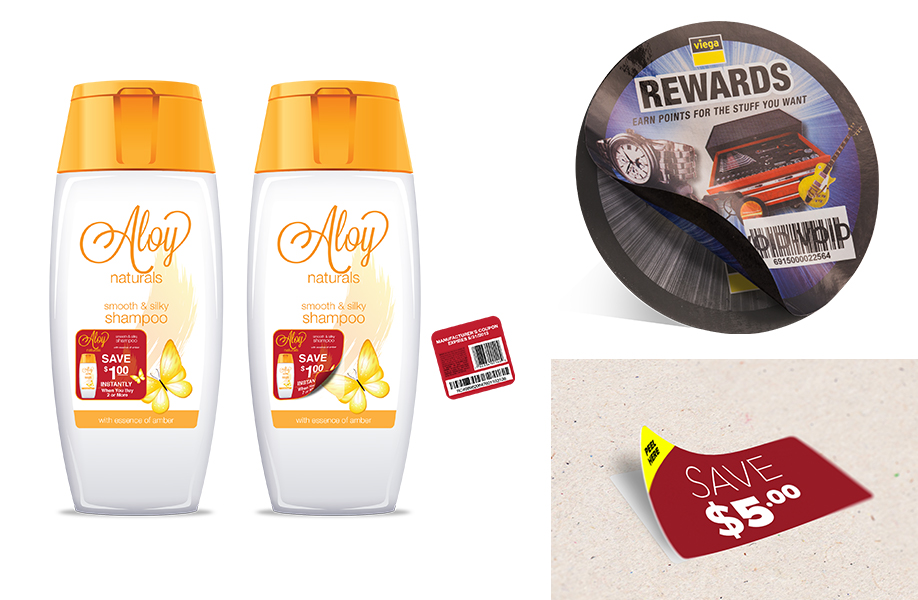Understanding your multi-ply label options

Sometimes your brand has more to say than the average label can contain. Instead of restricting yourself, consider a multi-ply label solution instead of just settling for standard single-panel labels.
Also known as extended content labels (ECL), this format lets you deliver key information like directions, regulatory requirements, ingredient lists, on-pack promotions and brand storytelling within small spaces.
Use this quick-start guide to help you understand the most common multi-ply label solutions.
Already know what you want? Get a quote here.
What are multi-ply labels?
You’ve likely engaged with various multi-ply labels for years. Ever seen a hinge label with fun recipes? Found alternative languages on a fold-out label? Unwrapped a peelable label for detailed product directions? These are all multi-ply label types.
The base layer of most multi-ply labels is made from film, while the extended content portion is typically printed on paper. These labels are prevalent across many consumer sectors, including food, beverage, and household and consumer products.
Related reading: Your tactical guide to understanding how and why different market segments use ECLs.
Choosing between peel-back vs. dry release vs. hinge labels
You can select from three basic formats when considering multi-ply labels. Contact a skilled label provider early in your process to understand the right one for your brand. They will collaborate with your procurement and marketing design teams to ensure maximum success in your final label product.
During these early conversations, be prepared to answer strategic questions like:
- Is this label’s purpose regulatory or messaging-driven? — This will help your label partner steer you toward formats that best suit your needs.
- If your purpose is marketing, how do you envision using it? — Common options include multilingual panels, non-regulatory pictograms, promotions, instant redeemable coupons (IRC), brand messaging, stories and recipes.
- What temperatures, chemicals, exposures or handling challenges will it face? — The answer to this question will determine your label’s material, adhesive and coating needs for durability.
Related reading: What to expect during a multi-ply label consultation.
Next, your label partner will walk you through your various multi-ply options. While there are many ECL types, it’s often easier for brands to understand them by considering construction — peel-and-reseal, dry release and hinge — rather than each type’s categorical name:
- After the first layer of peel-and-reseal labels is removed, they can be easily closed again.
- These labels pull apart for complete separation and are popular during promotions where customers submit pieces for redemption.
- These multipaneled labels can open like booklets or fold out to reveal several layers that never fully detach from your product.
Reveal more with peel-and-reseal labels
Whether you have required regulatory information to disclose or want to tell a story to deepen your brand’s relationship with your customers, peel-and-reseal labels help you make the most of limited space. The design permits repeated opening and closing without ever degrading the content.
Ironclad Distillery Co. uses peel-and-reseal wrap labels to share provocative storytelling and art, connecting with consumers as they handle and drink the product. But the goal wasn’t just brand engagement. It permitted native brand marketing to contextualize its identity with early ironclad naval vessels like the USS Monitor.

Dry-release labels suit your next in-store promotion
When customers peel off the top layer of a dry-release label, they can’t reattach them. That’s why they’re a go-to solution for brands interested in running in-store promotions, sweepstakes or experimenting with game pieces.
These little labels can include up to three panels of full-color art, maximizing your ability to make a big statement in a small space. And when you combine a double-sided top layer with a fully transparent film bottom layer, you don’t have to worry about tacky residue attracting dust and dirt on your packaging after removal.
Though small, dry-release labels can be surprisingly complex and fully customizable. This means:
- Broad material options — Choose from budget-friendly paper to pressure-sensitive BOPP.
- Expansive color range — Print up to 12 vibrant colors with variable data inkjet printing.
- Built-tough durability — Tactical coatings combined with a strong BOPP clear-film base protect your primary packaging.
IRC labels are often designed to stand out and grab attention from passing shoppers, but that design tactic doesn’t work for every brand. Here’s how we created an on-package promotion on a personal care product with as little graphic disruption as possible.
Read the case study
Expand your story with hinge or “booklet” labels
If you need to share large amounts of information in a relatively small area, booklet labels that hinge open or fold out to reveal multiple panels are an excellent option.
“Think of lawn and garden chemicals. When you turn to the back, it’s usually a thick multi-page booklet. You can peel it open or fold it out to reveal this big pamphlet that stays on the back of the bottle, and sometimes you can fold it all back in and reseal it shut. That’s a booklet label.”
— Aaron Kilgore, Regional Vice President of Sales at Resource Label Group

Common booklet label designs
- Resealable booklet labels — Users can open and close labels as needed. This lengthens the lifespan of your label to protect critical information.
- Offset booklet label inserts — Want magazine-quality printing? This versatile option offers top-notch color delivery in four flexible options: folded, bound, single-panel inserts and data packs.
- Flexographic booklet label inserts — For budget-conscious brands, this style is more cost-efficient than offset booklet labels while permitting multiple colors and widths via plow-fold or single-panel inserts.
How booklet labels helped this refrigerant manufacturer cut label costs by $100,000 — without sacrificing critical regulatory language
Read the case study

How much do multi-ply labels cost?
The price of multi-ply labels depends on too many variables for us to give you a simple price range. But we can collaborate with your team to help you save money by looping us in early and often. While many cost-efficiency solutions can come from changing materials, print techniques, specs or order sizes, a skilled label partner may find even more creative ways to save.
For example, one of our food product clients used to order two sets of labels — one front and one back. But they only had one label applicator in their facility, which meant every container had to run through the applicator twice.
After learning this, we suggested combining both into one smooth-peel ECL. While the branded graphics of the front label remained unchanged, it could also peel away to reveal all the information once reserved for the back label.
This simple solution doubled their label application speed.

Related reading: How to fix common label problems.
Brand owners often wait until it’s too late before approaching their label provider, resulting in pricy do-overs as their design teams go back to square one. It might seem easy to plan everything from page layout to barcodes. Still, if you don’t factor in on-pack engineering principles like container curvature or environmental challenges, you risk label failure once your product hits the market.
“Brands need to get us involved upstream before the packaging engineers and marketing sign off on your program. We can offer ideas to help you save money. We can give you options.”
— Aaron Kilgore, Regional Vice President of Sales at Resource Label Group
How to find the right multi-ply label partner
Labels seem simple, but they always prove complex to those who don’t plan early. The secrets to success are preparation and collaboration. And the only way to figure out which multi-ply label best suits your brand is to partner with a consultative label provider who can walk you through the technical aspects of format, cost, material and more.
Resource Label Group is committed to finding the best label solutions for any brand and budget. From compliance concerns to ornate and complex label construction, our team can take your concept from drawing boards to shopping carts.



